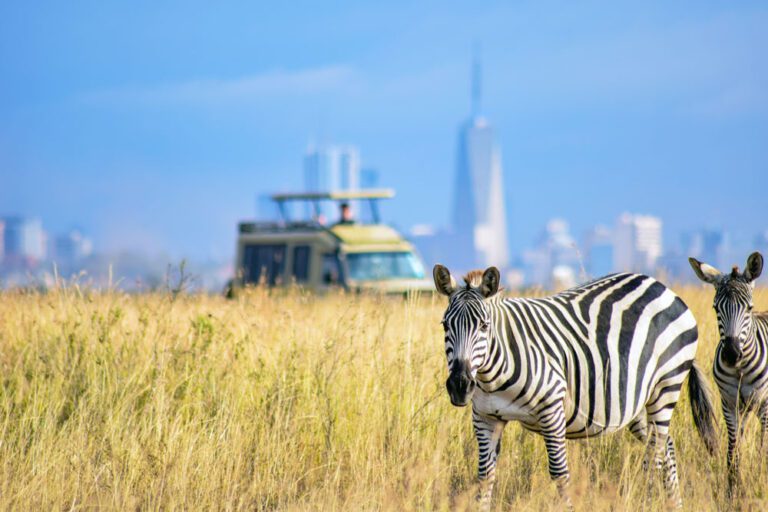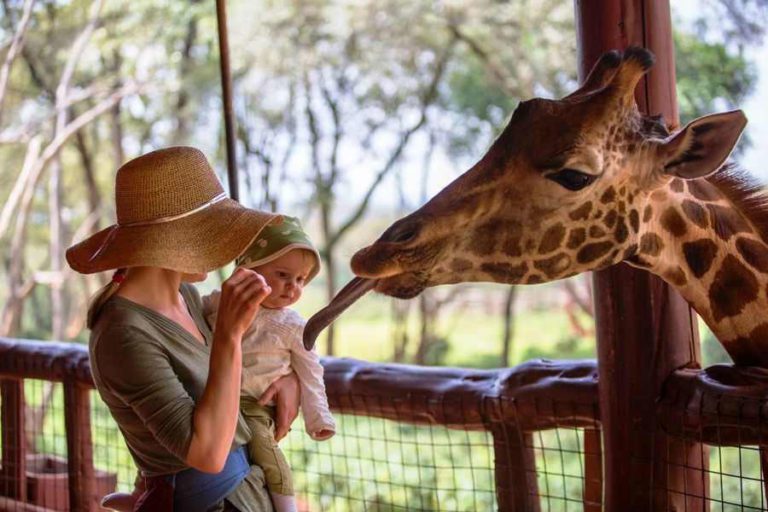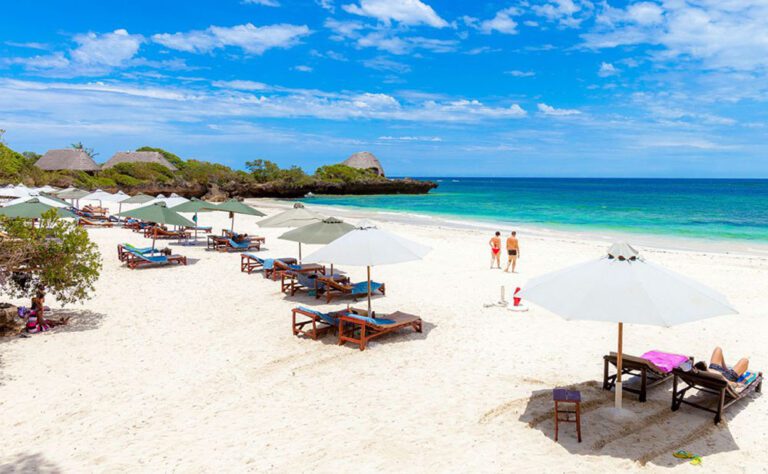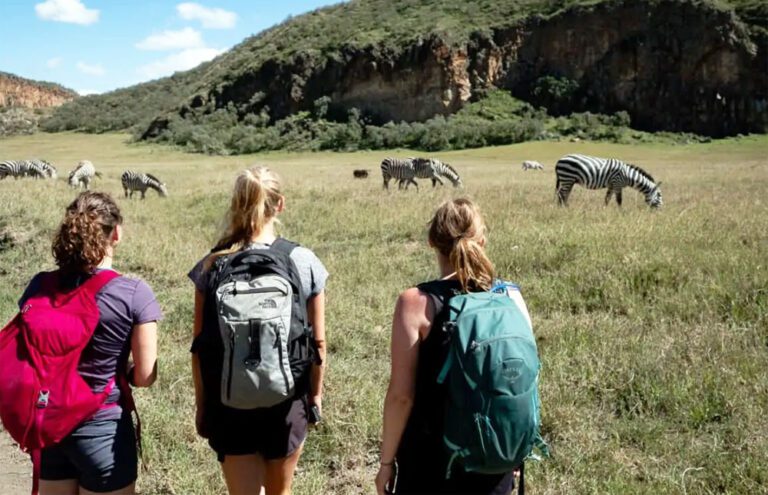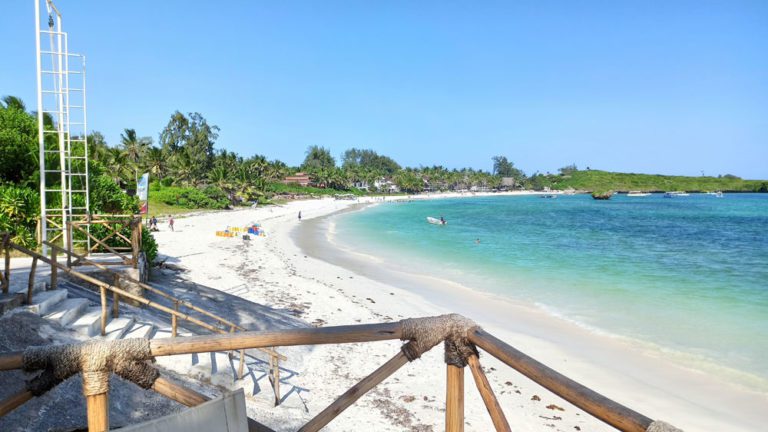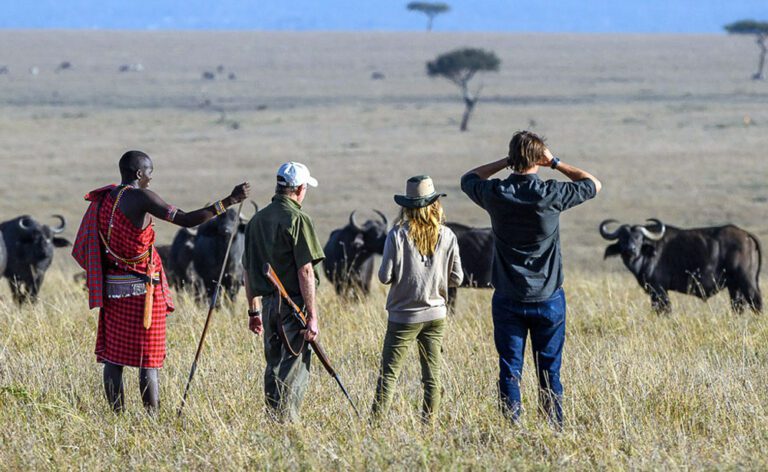Welcome to the Wilderness: Exploring the Sights and Sounds of Samburu National Park

The wind sweeps across the arid plains, rustling the acacia trees that dot the landscape. In the distance, you can see the rugged hills and mountains that make up the backdrop of this untamed region of northern Kenya. This is Samburu National Park, a place of raw natural beauty and abundant wildlife.
As soon as you pass through the park gates, you feel a sense of adventure and excitement. This vast reserve encompasses over 160 square miles of pristine wilderness, providing a sanctuary for some of Africa’s most iconic wildlife species. From large herds of elephants to the endangered Grevy’s zebra, Samburu National Park is home to creatures great and small.
In this article, we’ll journey through this remarkable landscape and discover what makes it so special. I’ll share tips on the best times to visit, where to spot unique animals and my own personal stories from exploring this unforgettable national park. Grab your binoculars and camera – let’s embark on an African safari adventure!
An Overview of Samburu National Park

Samburu National Park lies in the rift valley province of Kenya, around 240 miles from Nairobi. It was established in 1948 as a game reserve before later being gazetted as a national park in 1962. The Ewaso Ng’iro River flows through the middle of the reserve, providing a valuable water source for the animals here.
The landscape consists of open grassland plains, rugged hills, and riverine forest. It’s located in an arid region, so you’ll find acacia and doum palm trees rather than dense forests. Temperatures here are hot, especially before the rains come in November, but the climate remains relatively cool and comfortable at higher elevations.
Getting to Samburu National Park is quite an adventure in itself! Most visitors fly to Nairobi and then take a short flight to the parks’ airstrip, or embark on a long yet scenic drive passing through small towns and Rift Valley escarpments. The bumpy drive is well worth it once you catch your first glimpse of Samburu’s magical wilderness.
Wildlife Highlights in The Park

Now let’s talk wildlife! Samburu provides a sanctuary for an impressive array of unique northern Kenyan animals. Here are some of the iconic species you may be lucky enough to spot:
The best safari experience combines game drives with walking safaris, so you can observe wildlife up close from a vehicle and then track animals on guided walks through the bush.
As you explore deeper, you’re sure to spot graceful impalas, bouncing dik-diks, snoozing hyenas, and even leopards lounging in trees if you’re very fortunate. With over 900 species recorded here, each drive brings new surprises.
When To Go On Safari in Samburu

The prime game viewing periods are during the dry months from June-October when wildlife gathers near the Ewaso Ng’iro River.
From November-December, Samburu transforms into a landscape of wildflowers after the rains. Migratory birds flock here to breed, and most animals have calves during this time. Though wildebeest migrations don’t pass through here, you’ll still see large columns of elephants trekking across the plains.
Temperatures get scorching hot in the dry season, but the rainy season comes with some impassable roads. Anytime you visit, mornings and evenings tend to be the most pleasant. Setting out at dawn to track nocturnal predators heading home is an iconic safari experience!
No matter when you choose to visit Samburu’s wilderness, make sure to bring binoculars to spot unique creatures, a sun hat, and plenty of camera memory cards. Nothing compares to witnessing majestic African wildlife in their natural habitat.
Highlights from Samburu National Park
On my latest trip to Samburu, I was lucky enough to have some incredible wildlife encounters:
Memorable Moments With The Samburu People

While the animals are the main attraction, a highlight of visiting Samburu National Park is getting to interact with the local Samburu community. This semi-nomadic, pastoralist Nilotic tribe has lived in harmony with nature for centuries.
Seeing their manyatta settlements with traditional mud huts and experiencing a chat over sweet masala tea is an enriching cultural exchange. The Samburu women in particular, adorned in beautiful beaded jewelry, are always happy to share stories of their ancient customs and way of life if you have the chance to visit a village.
Where to Stay in Samburu National Park
Samburu National Park offers a wonderful range of eco-lodges and tented camps to choose from. Here are some of my top recommendations:
Whether you’re a luxury traveler or an adventurous backpacker, Samburu has budget-friendly lodges to boutique retreats. Wake up to sunrise safaris and later enjoy lantern-lit dinners under the stars for an unforgettable wild getaway.
The Sounds of Samburu
A safari in Samburu engages all the senses. The landscape has its own rhythm, soundtrack, and aroma that envelops you. Flowing rivers gurgle over rocky beds, acacia leaves rustle in the breeze, and exotic bird calls ring out from the trees. It’s a place to unwind and reconnect with nature.
As the Samburu proverb goes:
“Listen more often to things than to beings; hear the voice of fire, water, air, and the life that throbs in your heart.”
The Final Word
Visiting Samburu National Park is a one-of-a-kind experience. Safaris here allow you to venture off the beaten path into truly untouched wilderness and appreciate Kenya’s magnificent wildlife and cultures.
With its rugged landscapes, a wealth of rare northern species, and a wealth of luxury and budget accommodations, Samburu promises an adventure that awakens your senses in every way. Its endless vistas and raw natural beauty will imprint themselves on your soul for a lifetime.
I hope this virtual tour has inspired you to embark on your own African safari in this remarkable national park someday soon. Let me know if you have any other questions as you start planning your bucket-list Kenya trip!

